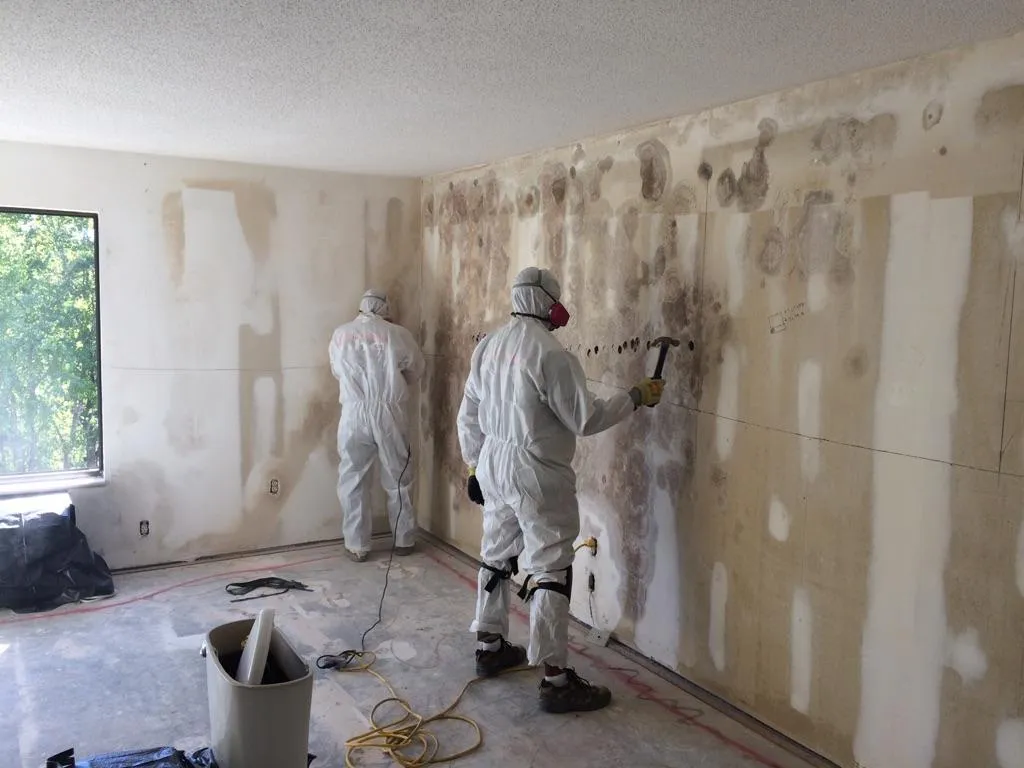1. Ensure Safety First
Before doing anything else, your safety should be the top priority after a flood. Here are some immediate steps to take:
- Turn off the power: Floodwater can cause electrical hazards. If you can safely access your electrical panel, turn off the power in flooded areas. If the panel is submerged, do not attempt to touch it—call an electrician.
- Avoid standing water: Standing floodwater can be contaminated with bacteria, sewage, or chemicals. Wear protective gear like boots and gloves if you must walk through it.
- Evacuate if necessary: If the flooding is severe, authorities may recommend evacuation. Ensure your family, pets, and important documents are safely removed from the premises if needed.

2. Document the Damage for Insurance
Once the immediate danger has passed, document the flood damage thoroughly for insurance purposes. Take the following steps to ensure you have proper documentation:
- Take photos and videos: Capture clear images and videos of the damage throughout your home, including walls, floors, furniture, appliances, and personal items.
- Keep a detailed inventory: List all damaged items, including their value, model numbers, and any receipts you may have. This will help with insurance claims and possible replacements.
- Contact your insurance company: Notify your homeowner’s insurance company immediately. They will guide you on the next steps, including how to file a claim for flood damage.
3. Remove Standing Water
The next step is to remove as much standing water as possible. Here’s how to handle it:
- Use pumps and wet/dry vacuums: If the water is deep, use sump pumps to remove it. For smaller areas, wet/dry vacuums work well for sucking up excess water.
- Open windows and doors: Increase ventilation by opening windows and doors to promote air circulation and speed up drying.
- Dispose of unsalvageable items: If water-damaged items like carpets, furniture, or mattresses cannot be restored, remove them from the home to prevent further damage and mold growth.

4. Dry Out Your Home
Mold can begin to grow within 24-48 hours of a flood, so it’s essential to dry your home as quickly as possible. Here are the steps to take:
- Use dehumidifiers and fans: Place dehumidifiers and fans throughout your home to speed up the drying process. Ensure air circulates in every room, especially in areas with the most water damage.
- Remove waterlogged materials: If drywall, insulation, or flooring is saturated, it may need to be removed and replaced to prevent mold growth.
- Check for hidden moisture: Moisture can hide in areas like walls, behind baseboards, or under flooring. Using a moisture meter can help you determine if further drying is needed.
5. Sanitize Affected Areas
Floodwater can bring contaminants such as bacteria and sewage into your home, so it’s important to thoroughly clean and disinfect the affected areas:
- Disinfect hard surfaces: Use a mixture of bleach and water (one cup of bleach per gallon of water) to sanitize surfaces like walls, floors, and counters that came into contact with floodwater.
- Dispose of contaminated items: Items like soft furnishings, carpets, and mattresses that were soaked in floodwater should be thrown out if they cannot be cleaned.
- Wear protective gear: Always wear gloves, masks, and goggles when cleaning to protect yourself from contaminants.

6. Prevent Mold Growth
Mold can quickly grow in damp conditions, so it’s crucial to take preventative measures:
- Continue to dry the area: Even after removing standing water and visible moisture, keep dehumidifiers and fans running for several days to ensure everything is thoroughly dry.
- Monitor for signs of mold: Be on the lookout for mold growth on walls, ceilings, or furniture. If you notice mold, clean it with a bleach solution or contact a mold remediation expert for help.
- Inspect hidden areas: Mold can grow in places you might not expect, such as behind walls or under carpets. Consider hiring a professional to inspect your home for hidden moisture and mold.
7. Call a Professional Water Damage Restoration Service
If the flood damage is extensive, or you’re unsure how to handle certain aspects of the cleanup, it’s a good idea to contact a professional water damage restoration service. Experts can ensure that your home is properly dried and that mold doesn’t have a chance to take hold. They’ll also be able to help with repairs and restoring your home to its pre-flood condition.
For professional flood recovery services, contact our team today.

FAQ
What should I do immediately after my house floods?
- Ensure safety by turning off the power (if safe), avoid standing water, and evacuate if necessary. Then document the damage and contact your insurance company.
How do I prevent mold after a flood?
- To prevent mold, remove standing water, dry out your home using dehumidifiers and fans, and disinfect all surfaces. Monitor for signs of mold in the days and weeks following the flood.
Can I stay in my home after a flood?
- It depends on the severity of the flooding. If floodwater has damaged electrical systems or made the home unsafe, it’s best to stay elsewhere until cleanup and repairs are complete.
How long does it take to dry out a house after a flood?
- Drying out a house can take anywhere from a few days to several weeks, depending on the extent of the water damage and how well you can ventilate and dehumidify the space.
What are the dangers of floodwater?
- Floodwater can contain contaminants like sewage, chemicals, and bacteria, which can cause illness. Always wear protective gear when dealing with floodwater, and sanitize surfaces thoroughly.
If your home has recently flooded, schedule a professional consultation today to ensure your home is safely restored.

